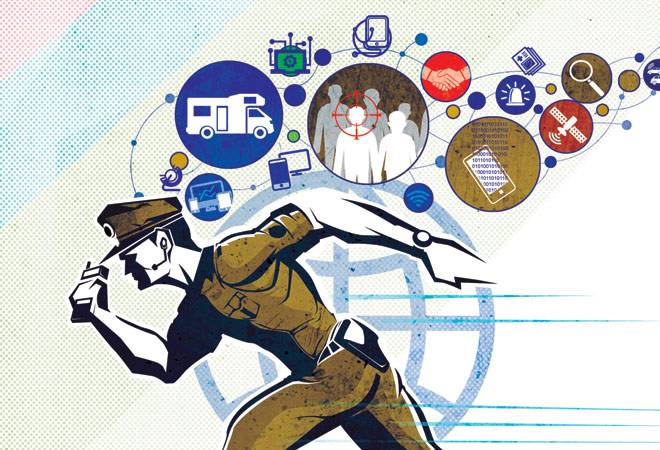
POLICE REFORMS
Context
- Recent events like encounter of Vikas Dubey, custodial deaths in Thoothukudi etc. have raised demands for police reforms.
- The primary role of police forces is to
uphold and enforce laws, investigate
crimes and ensure security for people in
the country.
- Police forces need to be well-equipped–
in terms of personnel, weaponry,
forensic, communication and transport
support, to perform their role well.
They need to have the operational freedom
to carry out their
- responsibilities professionally, while being h
eld accountable for poor
performance
or misuse of power
RESPONSIBILITIES OF CENTRE AND STATES
- The Constitution provides for a legislative and
- executive division of powers between centre and
- With regard to police, some of the key
- matters regulated by centre and states are:
ISSUES INVOLVED WITH INDIAN POLICE FORCE
- Overburdened police force: State police forces had 24% vacancies (about 5.5 lakh vacancies) in
- January 2019. Hence, while the sanctioned police strength was 181 police per lakh persons in
- 2016, the actual strength was 137 police. United Nations recommended standard is 222 police
per lakh persons.
- police infrastructure
- CAG audits have found shortages in weaponry with
- state police forces. For example, Rajasthan and
- West Bengal had shortages of 75% and 71%
- respectively in required weaponry with the state
- Utilisation of funds for modernisation:
- Police Accountability: In India, the political
- executive has the power of superintendence and control over the police forces to ensure their
- However, the Second Administrative Reforms Commission has noted that this
- power has been misused, and ministers have used police forces for personal and political
- Women in Police: Women make up only 7.28% of India’s police force. (Status of Policing in India
Report, 2019”) This is very low as compared to home ministry’s advisory to increase
representation of women in police to 33% of the total strength.
- Low Government Spending: Expenditure on police accounts for about 3% of the central and
state government budgets.
- Underreporting of Crime in India: Significant under-reporting of crimes under the NCRB for
various reasons. eg, suppression of data and low registration of crimes, victims of crime may
decide against reporting as they are afraid to approach the police.
POLICE REFORMS
- Various expert bodies have examined issues with police organisation and functioning over
the last few decades:
- Police Accountability – To allow the police greater operational freedom while ensuring
- accountability, various experts have recommended that the political executive’s power of
- superintendence over police forces be limited. The Second Administrative Reforms Commission
- has recommended that this power be limited to promoting professional efficiency and ensuring
- that police is acting in accordance with law.
- Reducing Burden – Second Administrative Reforms Commission has recommended that one way
- to reduce the burden of the police forces could be to outsource or redistribute some non-core
- police functions (such as traffic management, disaster rescue and relief, and issuing of court
- summons) to government departments etc.
- Crime investigation – Crime investigation requires skills and training, time and resources, and
- adequate forensic capabilities and infrastructure. Experts have recommended that states must
- have their own specialized investigation units within the police force that are responsible for
- crime investigation.
- Police infrastructure – Modern policing requires a strong communication support, state-of-art or
- modern weapons, and a high degree of mobility. Eg. Weaponry, Vehicles, Police
- Telecommunication Network etc.
- Police-public relations – Police requires the
- confidence, cooperation and support of the
- community to prevent crime and disorder. For
- example, police personnel rely on members of
- the community to be informers and witnesses in
- any crime investigation. The Second
- Administrative Reforms Commission has noted
- that police-public relations are in an
- unsatisfactory state because people view the
- police as corrupt, inefficient, politically partisan
- and unresponsive.
- Community policing – requires the police to work
- with the community for prevention and detection
- of crime, maintenance of public order, and resolving local conflicts, with the objective of
- providing a better quality of life and sense of security. Eg. Janamaithri Suraksha in Kerala
- Way Forward
- ‘SMART’ policing, S for strict but sensitive, M for modern and mobile, A for alert and
- accountable, R for reliable and responsive and T for techno-savvy and trained should be the
target of Police Reforms.
